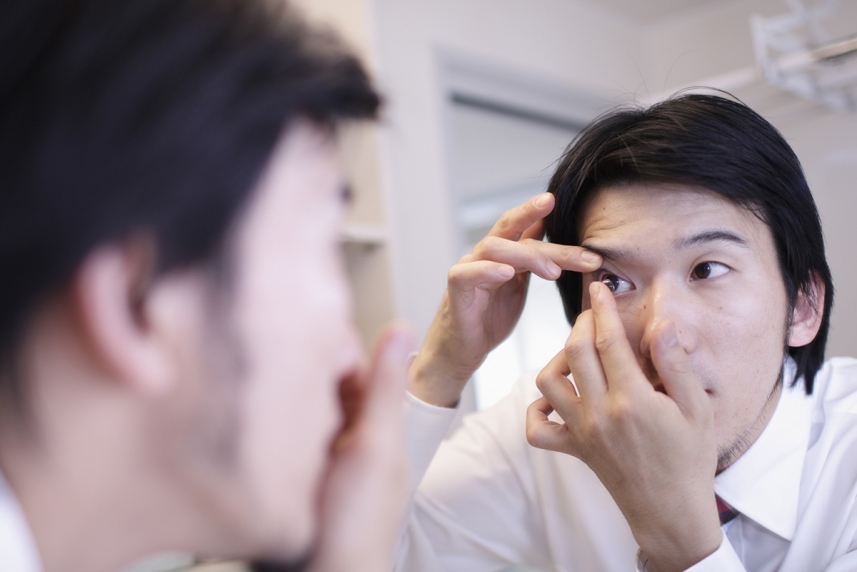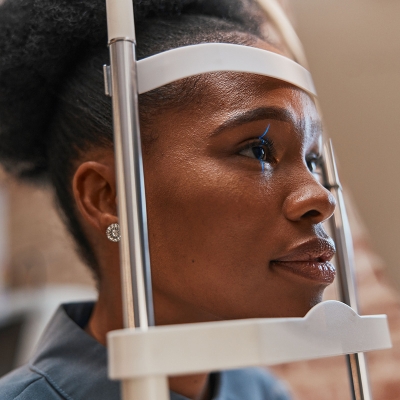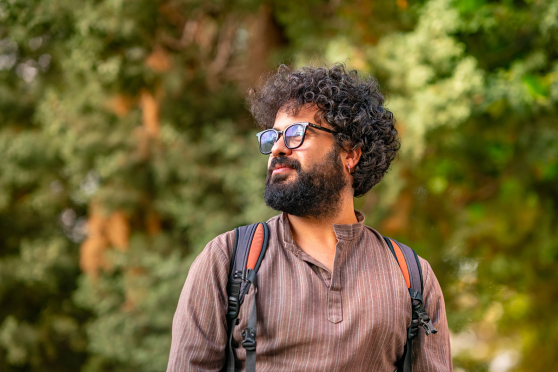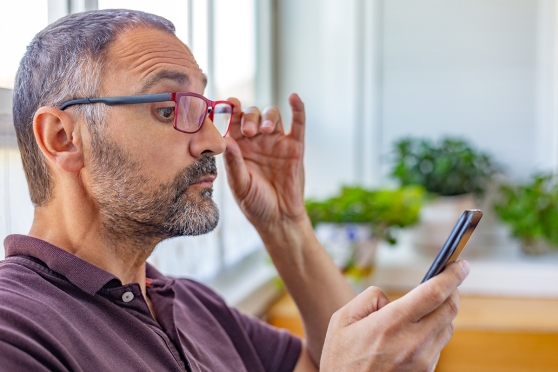7 ways to manage nearsightedness that don’t include glasses
For adults and children having trouble seeing objects at a distance, here are some ways eye care providers can help.

Both kids and adults can have myopia or nearsightedness. That’s when a person has trouble seeing objects at a distance. That can make daily tasks, like seeing the board at school or driving, hard.
In fact, about 40% of Americans have this vision disorder.1 One of the best and most common ways to correct nearsightedness is prescription glasses.
But there are several other effective treatment and prevention options. That can depend on a person’s age or the seriousness of their eye condition. Here are 7 other ways to treat nearsightedness:
Ordering new glasses online is easy with UnitedHealthcare Vision’s virtual mirror. Skip the store and try them on here.
1. Contact lenses
If a person doesn’t want to use glasses, they can always try contact lenses instead. (They can be a good choice for both kids and adults.) A person may find that their distance vision is better when wearing them. Contact lenses may even provide a wider field of vision for some. 2,3
Because contact lenses go directly on the eye, they may require more visits to an eye care provider to get them. People also need to practice proper contact lens care and safety steps.
2. Orthokeratology (Ortho-k) or Corneal Refractive Therapy (CRT)
Orthokeratology, or Ortho-k, can be another option. A person may also see it called Corneal Refractive Therapy, or CRT.
It’s not a type of eye surgery. Instead, it involves a person wearing special hard contact lenses for a short time while they sleep. The process gradually and temporarily reshapes the cornea.3 (That’s the dome-shaped front part of the eye.)
It helps people see better during the day. It also lets them see clearly without glasses or contact lenses. Ortho-k is particularly effective for people with mild to moderate amounts of myopia and low astigmatism.
It’s most effective for ranges of nearsightedness under -5.00 D (that stands for “diopters,” a measurement of the optical strength of a lens). It may help slow nearsightedness caused by astigmatism in children.4 That’s an eye condition where the cornea has an irregular shape, making it hard to see at both a distance and up close.
But it’s not for everyone. Here are some reasons Ortho-k may not work for some people:4
- Some studies suggest that Ortho-k can slow eye growth in children.
- The lenses are reusable, so they may require more care.
- Wearing lenses at night can put the eyes at risk of infection.
- Wearing hard contact lenses can be less comfortable, especially for children.
- An individual has high amount of nearsightedness and astigmatism
3. Laser eye surgery
Different types of laser eye surgery can also be a way to correct nearsightedness. But they’re only appropriate for people over the age of 18 whose vision is stable.5 Some of the most popular procedures include:2,3,5,6
- LASIK. That stands for laser-assisted in situ keratomileusis. (A person might also see it called laser vision correction.) The surgery involves an eye care provider reshaping the cornea with a laser.
- LASEK. That stands for laser-assisted subepithelial keratectomy. It’s similar to LASIK, but during the surgery, the eye care provider makes a tiny flap on the outer cover of the cornea (epithelium). Then a laser is used to reshape the cornea.
- PRK. That stands for photorefractive keratectomy. It’s similar to LASEK, but the eye care provider completely removes the cornea’s outer layer, before reshaping the cornea. They then place a special contact lens over the cornea until its outer layer grows back.
- SMILE. That stands for small incision lenticule extraction. An eye care provider uses a laser to create a small, round-shaped piece of tissue under the cornea (lenticule), which is then removed. It’s a newer procedure.
4. Phakic intraocular lenses (IOLs) or implantable contact lenses (ICLs)
This procedure is best for people with nearsightedness who are between the ages of 21 and 45.7 During it, an eye care provider will implant phakic intraocular lenses, or IOLs, inside the eye, just in front of the natural lens. (They might also be called implantable contact lenses or ICLs.) They’re used to correct severe nearsightedness. That’s for people whose corneas are too thin for LASIK or PRK surgery. They're made to make vision better without taking out the eyes’ natural lens.
5. Low-dose atropine eyedrops
Low-dose atropine eyedrops are used to slow or stop the progression of nearsightedness in children, teens and young adults who are dealing with progressing nearsightedness. These drops are typically applied once a day. They are an easy-to-use choice for managing the eye condition in younger patients.
6. Dual focus and multifocal contact lenses
Dual focus contact lenses are designed to slow the progression of nearsightedness in children, teens and young adults. They’re a comfortable way to provide clearer vision.
Multifocal contacts, on the other hand, are a type of soft contact that combines multiple prescriptions into a single lens. They can help improve near, middle and distance vision.
7. More time spent outdoors
- This may be the easiest way to lower the chance of getting nearsightedness. It’s most effective for children.
Natural sunlight and the increased distance vision required to be outdoors can have a positive effect on eye health. Encouraging kids to spend at least 1 to 2 hours a day outdoors every day, along with reducing time spent on near activities such as computers, tablets and other smart devices, can be a simple and effective way to reduce the risk of them developing nearsightedness.8
Does your child need new glasses? In 3 easy steps, they can have a new pair on the way. Check your vision coverage, select their favorite frames, then check out. Done!
Sources:
- High myopia prevalence across racial groups in the United States: A systematic scoping review Journal of Clinical Medicine, April 2023.
- Myopia (nearsightedness) Cleveland Clinic, last reviewed October 2023.
- Myopia (nearsightedness) American Optometric Association
- Four alternatives to eyeglasses for children with myopia American Academy of Ophthalmology, August 2023.
- LASIK surgery: Is it right for you? Mayo Clinic, June 2023.
- Nearsightedness Mayo Clinic, April 2024.
- Phakic Intraocular Lenses (IOLs) or Implantable Contact Lenses (ICLs) Kellogg Eye Center University of Michigan Health
- New report recommends myopia be classified as a disease, policies for children to spend time outdoors National Academies of Sciences, Engineering and Medicine, September 2024.


